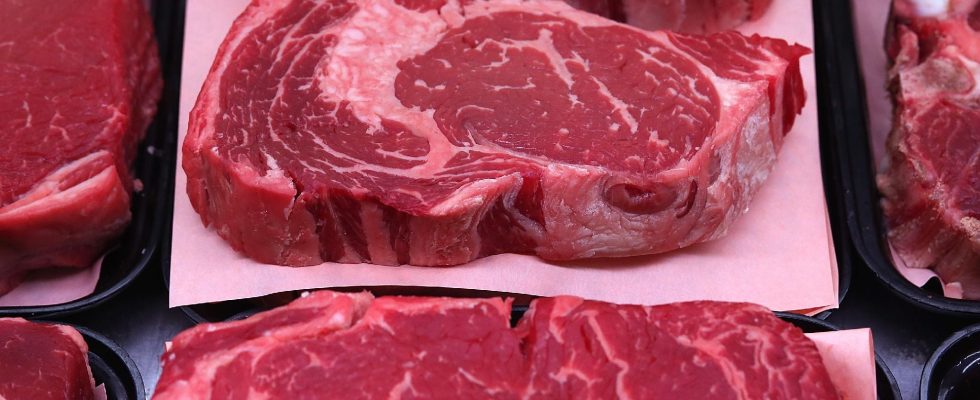A striking step back. In twenty years, per capita consumption of beef in France has fallen by 19%, according to a summary note published on June 27 by FranceAgriMer, an establishment dependent on the Ministry of Agriculture. Most meats are also affected by this decline, particularly sheep meat (mutton, lamb) and pork. Only poultry consumption is increasing. All meats combined, average per capita consumption fell by 5.8% between 2003 and last year, and by 1.7% between 2022 and 2023.
This drop comes after two years of increase in consumption (in 2021 and 2022), in a context of post-Covid-19 economic recovery. Butcher’s meats are particularly affected by last year’s fall, “in an inflationary context which weighs on consumers’ purchasing power”, underlines FranceAgriMer. On average in France last year, each inhabitant consumed 83.5 kg carcass equivalent (kgec), compared to 85.1 kgec on average each year between 2013 and 2022.
Poultry meat is the only one to stand out in 2023: on average per inhabitant, its consumption amounted to 29 kgec, up 0.9 kgec compared to 2022. “More accessible than butcher’s meat”, it also benefits from a “context of recovery in poultry production”, after “different waves of avian influenza epizootics”, according to the summary note.
In a report published in January, the High Council for the Climate noted: “Reducing the consumption of products of animal origin and replacing proteins of animal origin with plant proteins constitute, together, the first lever for reducing emissions from food. ” Agriculture represented 19% of France’s greenhouse gas emissions in 2022, according to the data of INSEE and the Ministry of Agriculture.
